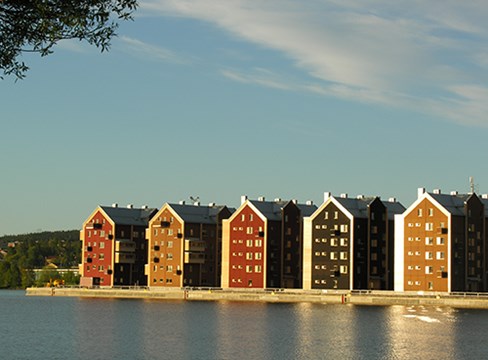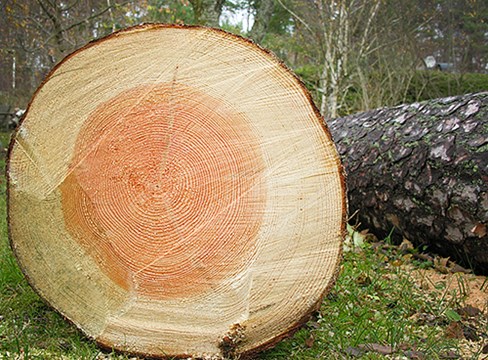Harvesting
When a tree is ready for harvesting and has been felled, the trunk is usually debranched and cut into butt log, middle log, top log and one to three sections of pulpwood. Crown and branch wood can be collected up to be chipped and used as forest fuel. Smaller trees that are felled during thinning, for example, are cut into pulpwood or small-dimension sawlogs (top diameter 120–200 mm).
Sawmills
Sweden currently has around 140 sawmills, which produce over 10,000 cubic metres of sawn wood products per year. Production is being concentrated among ever fewer companies, with the individual sawmills specialising in wood types and product groups. Of the total production in Sweden of around 17 million cubic metres sawn wood products (2011), the 10 biggest companies account for around 60 percent and the 20 biggest companies account for around 80 percent of the country’s production. Alongside the industrial sawmills is the smaller-scale production for local and domestic purposes at a number of small sawmills.
Different cutting methods are used at the sawmills. The circular saw dominates among the small sawmills, while reducer band saws and reducer circular saws are most common in larger sawmills. The reducing process mills away the circular segments outside the rectangle, which is then divided up into planks and boards using band or circular saws. The profiling saws cut a profile out of the log cross-section, and then the circular saws divide the planks and boards up into different cross-sectional dimensions. Profiling saws are very much on the up, with older sawmill methods becoming more uncommon. See also Surface structures in the chapter Quality and range.
The flow from log to finished products is shown in the diagram of the sawmill process to the right. The sawmill makes use of the whole log.
The most common method of sawing coniferous softwood is block-sawing followed by resawing. The sawn timber (planks and boards) is given a rectangular cross-section, except for the outermost boards, which have a certain wane edge, which means that the edge is rounded instead of being sharp. Wood from the inner part of the log is called the main yield, while wood from the outer parts is called sideboards. Sometimes the wood nearest the pith is sawn out with a pith catcher.
The newly sawn wood’s moisture content (see Moisture content) varies between 30 and 160 percent. In order for this wood to be stored without loss of quality, it is dried to the target moisture content of 16 percent. Sooner or later, undried wood will be hit by microbial attacks, such as blue stain, mould or rot. See the section Microorganisms.
Wood tends to be dried at the sawmill to the target moisture content required for the intended end use. See chapter Wood and moisture.

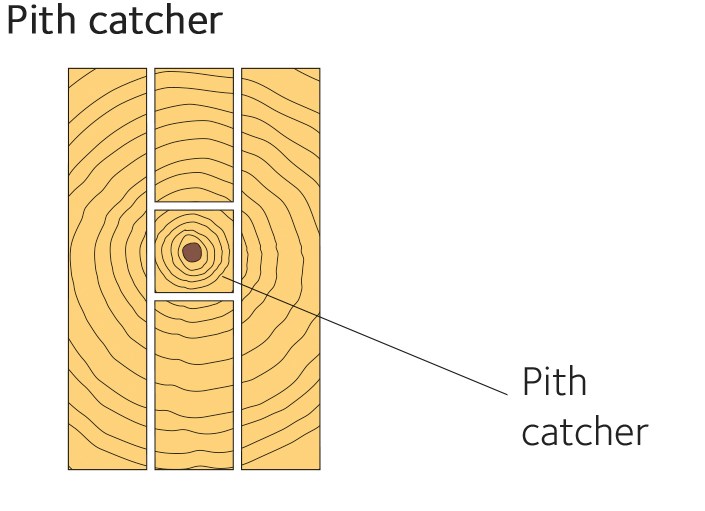
Exports
Of the 17 million or so cubic metres sawn wood products that Sweden has produced on average over the past 10 years, the domestic market consumes around 5.4 million cubic metres. The remainder, about 11.5 million cubic metres or two thirds, is exported to other countries. The exported wood is sold packaged in particular dimensions and lengths.




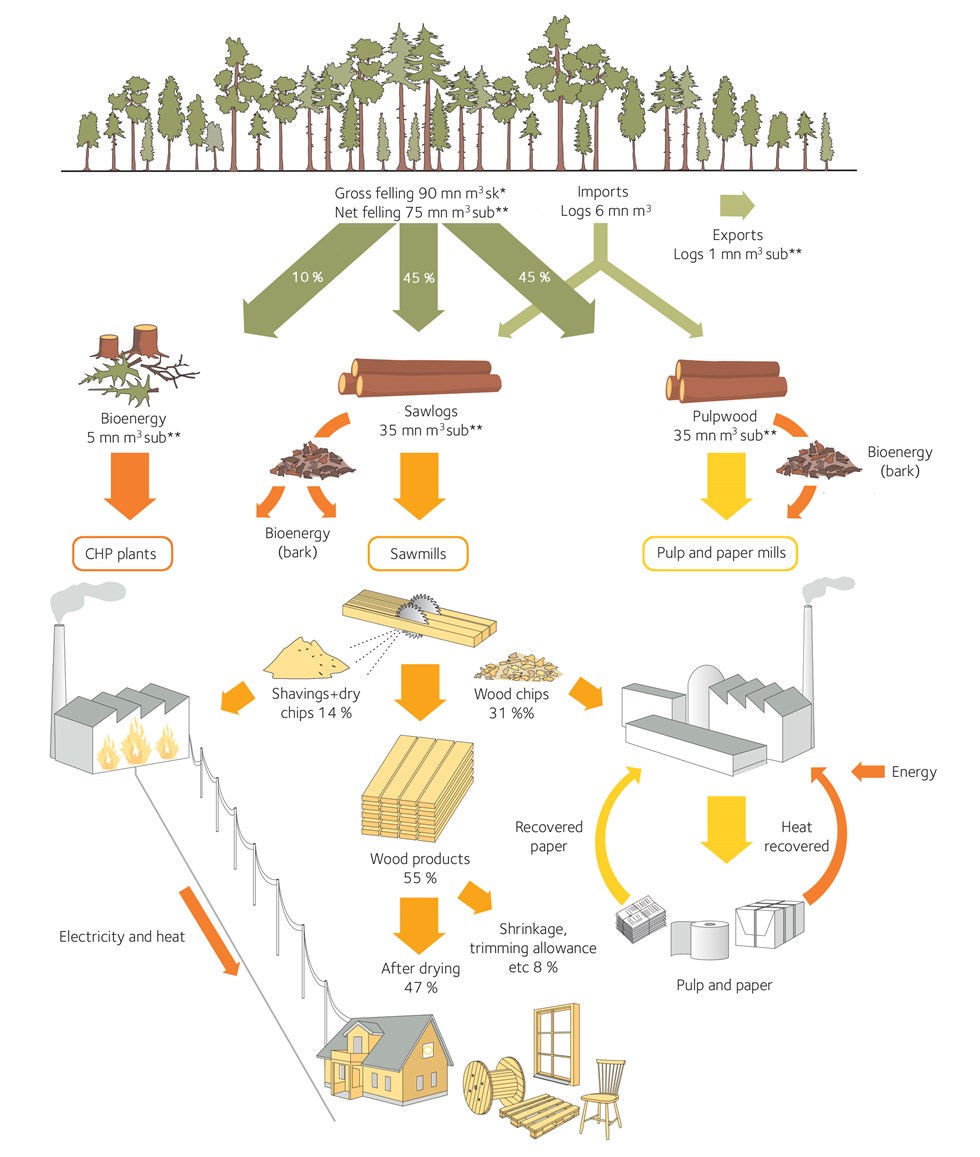
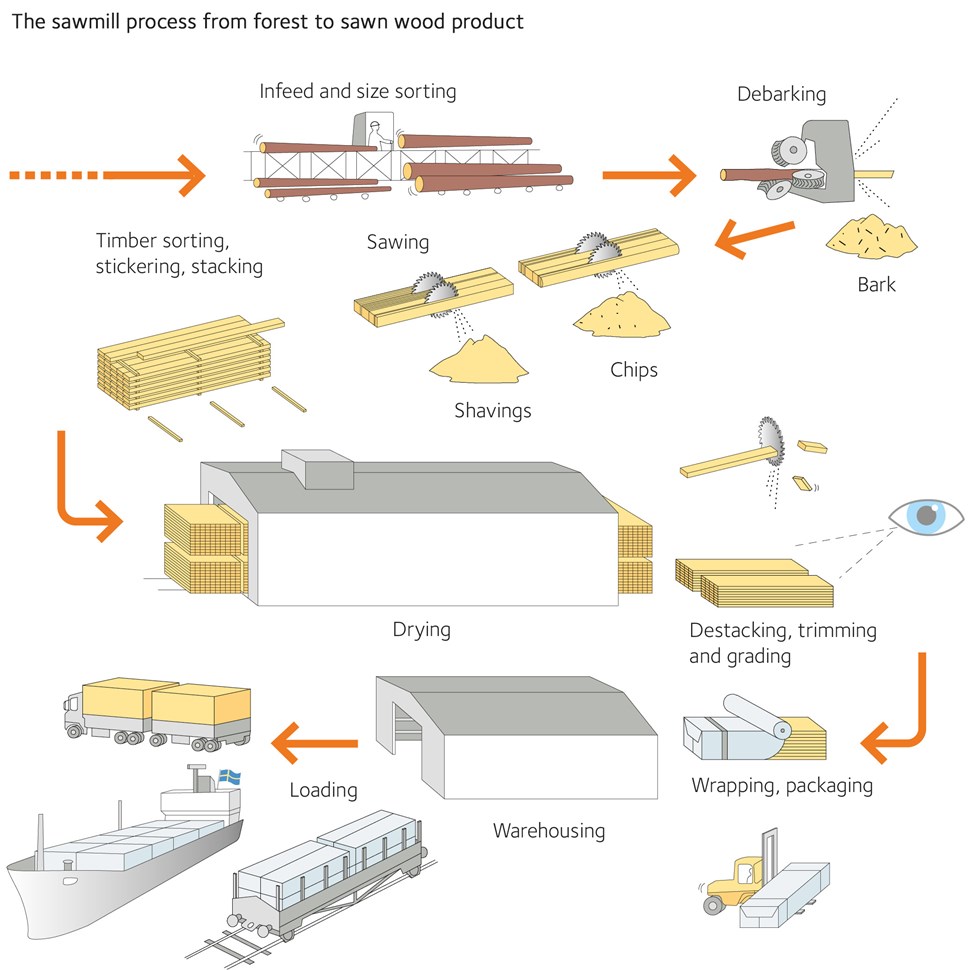
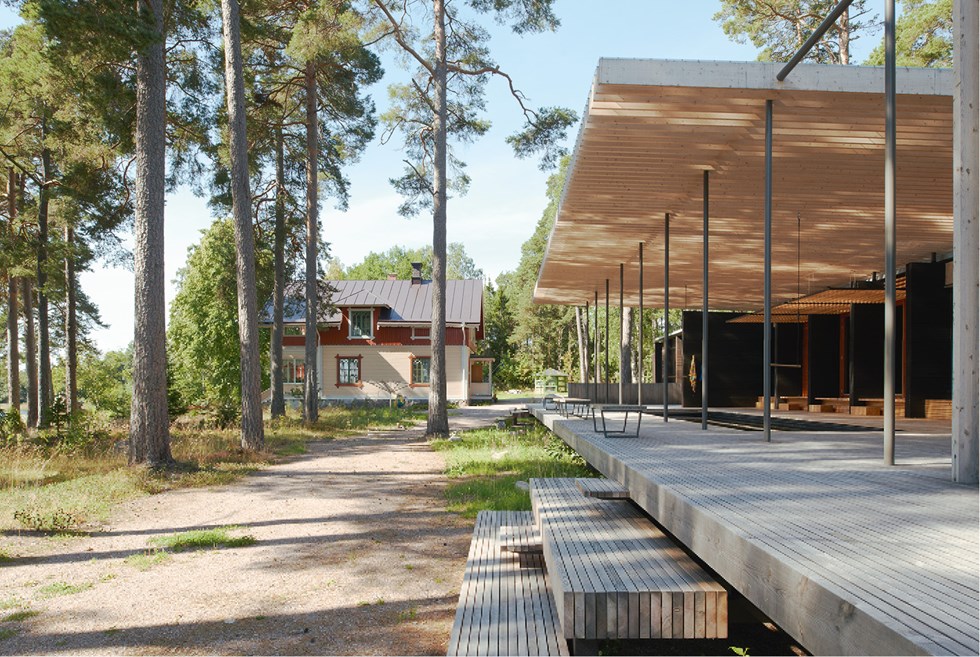 Tomtebo forest sauna, Gävle, winner of the Swedish Timber Prize 2012.
Tomtebo forest sauna, Gävle, winner of the Swedish Timber Prize 2012.
